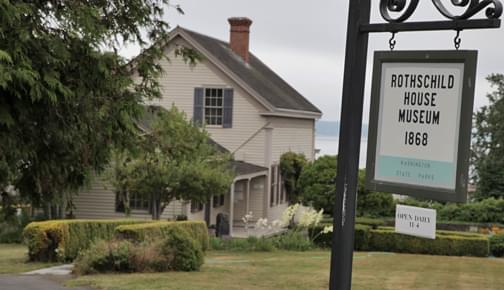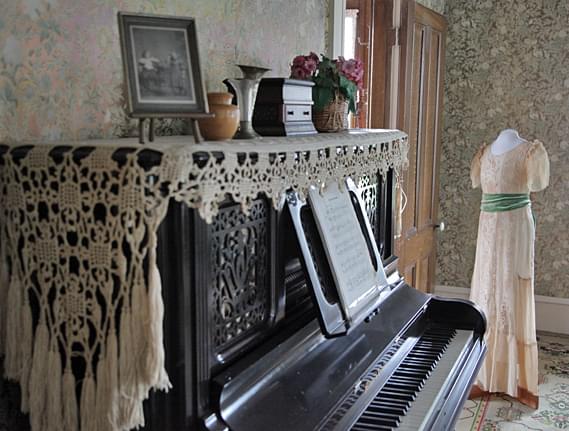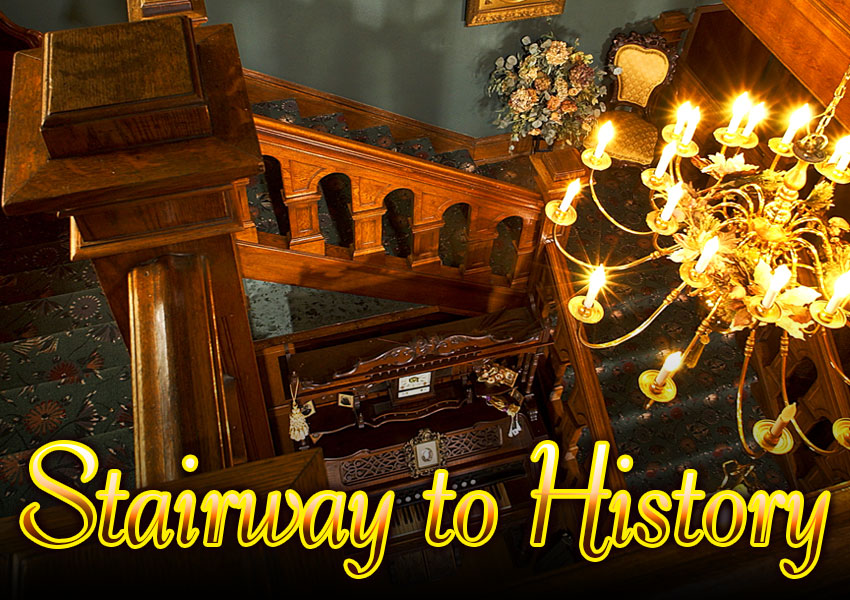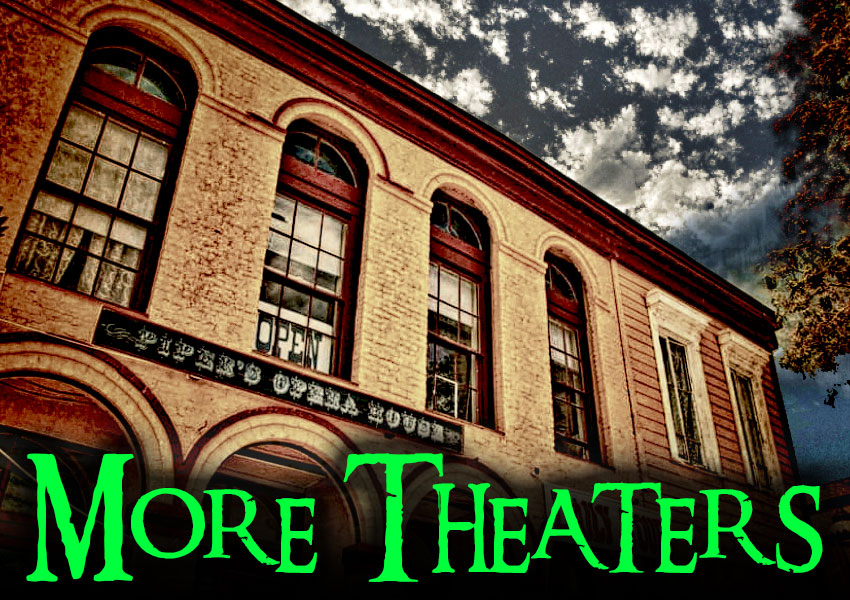Port Townsend Washington
Rothschild House
Various members of the Rothschilds like to visit and remember.
Some disapprove of the modern amenities added…
It must be fun to visit their personal stuff on display!
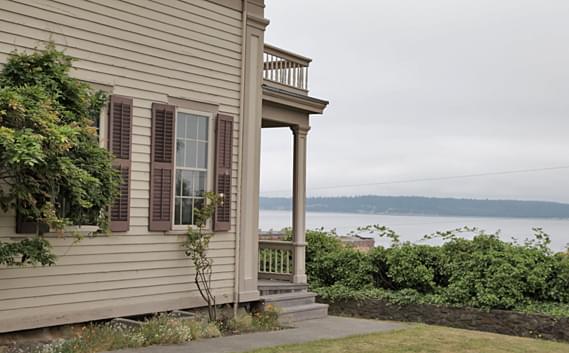
DESCRIPTION
From 1868 to 1959, This sensible, yet handsome Greek Revival Victorian-era house, was the beloved home of arious members of the Rothschild family. It doesn’t highlight the wealth of the family in a showy way, but rather has an aura of quiet respectability, a quality that was valued by D. C. H. Rothschild, his wife, Dorette, and his five children.
The Rothschild House was built upon a foot thick stone foundation, that created a cool, basement cellar to store meat, wine, and big barrels of sauerkraut.
Upstairs there were four bedrooms, while downstairs there was another bedroom, a dining room, a parlor, a large kitchen with a wood-burning stove, and a large copper boiler attached to the stove, to access hot water easily. The heating system relied on fireplaces. For example, there were back-to-back fireplaces that kept the dining room and parlor warm.
A washroom with a tin tub and washstand was also on the first floor, located just off the kitchen. Gas lamps were also used by the Rothschild family to provide light for their home, even after electricity was a common amenity, as it was seen as an unnecessary expense.
A privy outside the house was used for years. A modern bathroom with an indoor toilet wasn’t installed until the late teens, as Dorette Rothschild continued to be very frugal. A stable and carriage house, servant’s quarters, a two story wash house, and an orchard were also on their property as well.
Careful construction inside showed a high level of craftsmanship, as labor was cheap, and a lot of time was invested. Two good examples that can be seen inside are the glorious Honduras mahogany stair bannister, that was gently curved by steaming and slowly bending the wood. Plus, much of the woodwork was hand-grained to simulate oak.
Visiting this house museum is like stepping back in time, back to 19th century culture of a first-generation German family that succeeded, and it seems like the Rothschild family just stepped out for a walk. “Original furnishings and artifacts of the family fill the house. The piano that came around Cape Horn sits in the parlor as it has for over 130 years. The dining room table is set with the family’s best plates and settings.”
In fact, every room of The Rothschild House is displayed as if the Rothschild clan still lived there, from the children’s playroom to the sewing area, containing the actual family furniture and items owned by the various family members; making this museum a true snapshot of 19th, and early 20th century culture.
There is always something new to see every season at The Rothschild House. Every year, a new textile exhibit is on display at the Rothschild House. As of May 1st, 2013, some of the most amazing handwork seen on 1890-1930s dresses from the family collection can be seen by visitors. The dresses in this display, showcase the fancy handwork of the Rothschild women, including their use of beads, sequins, fabric roses and embroidery.
HISTORY
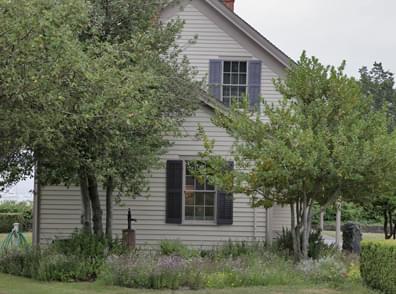 This story begins with German immigrant, D. C. H.(David Charles Henry) Rothschild, who had great skill in making money in the mercantile business. He became wealthy from his stores in California and Bellingham, and when he decided to settle in Port Townsend, Washington, he opened another well-stocked and popular mercantile store, called “The Kentucky Store.” It was located on the pier, so that ships could directly unload items ordered on the spot.
This story begins with German immigrant, D. C. H.(David Charles Henry) Rothschild, who had great skill in making money in the mercantile business. He became wealthy from his stores in California and Bellingham, and when he decided to settle in Port Townsend, Washington, he opened another well-stocked and popular mercantile store, called “The Kentucky Store.” It was located on the pier, so that ships could directly unload items ordered on the spot.
Wanting to marry, he sent away for a business partner’s seventeen-year-old sister, Dorette, and brought her from Germany. They married in 1863. The couple’s twenty-year age difference didn’t matter at all. At first, they lived on the top floor of The Kentucky Store. Their first three children, Henry, Louis, and Regina were all born there.
In 1868, D. C. H. Rothschild bought some land that overlooked his store, up on a bluff, and built the sensible family dream home, known as The Rothschild House. Two more children, Emilie and Eugene, were born there. The family was warmly accepted into Port Townsend society, for the Rothschild family was hospitable and friendly.
In 1881, wishing to start a new venture with his two oldest sons, Rothschild sold The Kentucky Store, and tried to start a shipping business, a very competitive field in Port Townsend. In 1886, a recession hit the economy, and the Rothschild business struggled, which pushed D. C. H. Rothschild over the edge into mental illness. Not able to face this perceived failure, he became very depressed, to the point of causing family concern for his welfare. They watched him closely.
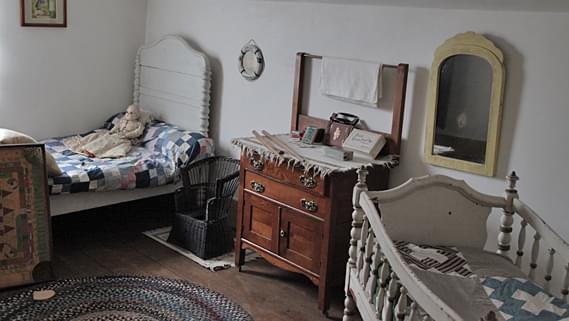 But not closely enough. Rothschild slipped away from their watchful eyes, and shot himself in the head, leaving his sons to struggle in the challenge of their lagging shipping business without him. His suicide was covered up, as all were mindful of the pain and embarrassment such a disclosure would have on the surviving family members, who were well-loved and respected.
But not closely enough. Rothschild slipped away from their watchful eyes, and shot himself in the head, leaving his sons to struggle in the challenge of their lagging shipping business without him. His suicide was covered up, as all were mindful of the pain and embarrassment such a disclosure would have on the surviving family members, who were well-loved and respected.
However, his sons, Henry and Louis, would have made their father proud, as they came up with a solution to weather the recession and come out financially on top! Henry and Louis relocated their operations across the Sound to the Seattle area, where business opportunities were much more promising.
Daughter Regina eventually married and moved away, probably to the Seattle area as well. However Emelie stayed with her mother, Dorette, and helped to raise her younger brother, Eugene. Emelie made a decision not to marry, choosing family obligations first. Eugene was raised in The Rothschild House, but he too eventually joined his siblings in the Seattle area.
Because of their temporary loss of fortune, the Rothschild family at first lived very frugally, watching every penny. Thanks to the hard work and wise decisions of the older sons, their financial situation improved. Though their financial crisis passed, Dorette and Emilie continued to live frugally, refusing to let modern conveniences and inventions of the era come into the family home, choosing to live the way they had always lived. They used their horse and buggy until the horse died, but they never got a car, because it was an unneeded expense.
The one improvement that was allowed was the installation of a toilet inside the washroom on the first floor, off the kitchen, because one was truly needed for Dorette during her last years of life. When Dorette died in 1918, Emelie continued to live in the family home, living the life style she loved, while keeping the house in good shape and running order. It was like living in a time capsule, as Emelie kept all the essential tools of living that they had used for so long. She had a full yet prudent life, living comfortably within her means. Though she never married and had a family of her own, she enjoyed the frequent visits of her siblings, her nephews and her nieces, who all loved her.
After living nearly 78 years in her beloved family home, Emelie died in the late 1950s. Her youngest brother, Eugene, inherited this property, but he had his own home in Seattle, yet didn’t want to sell the beloved family home either. So, in 1959, he solved the predicament by giving the property to the Washington State Parks and Recreation Commission. The Jefferson County Historical Society stepped up to the plate and took charge of this remarkable authentic house museum.
Though The Rothschild House was in good repair, it was updated with modern amenities, including electricity, running water and heat. Original wallpaper was restored. The outside gardens were replanted, and are in good shape, featuring herbs, and many older varieties of peonies, roses and lilacs acquired throughout the United States. The Rothschild House opened as a museum in 1962.
HISTORY OF MANIFESTATIONS
People who kill themselves, sometimes find that they gravitate back to their favorite earthly places.
When Rothschild shot himself, he did it on the beach south of town, so his family wouldn’t be the first to find his body. He might have had regrets, and decided to spend his afterlife in his dream home, remembering the good times, as well as keeping an eye on the surviving family members. If members of his family still come to visit or stay in their home, he may join them, making up for the years that they struggled on without him.
People who care about their homes, and have certain plans for them, sometimes like to visit or stay, as well as keep a friendly eye on the living now taking care of them.
Spirits often feel the need to watch carefully the visitors to their homes, being good hosts.
A plus for them is they still have the house to themselves when the museum closes for the day, and during the off-season. They may enjoy the reactions of visitors who love to see and learn about the Rothschilds’ way of life, and admire the family heirlooms.
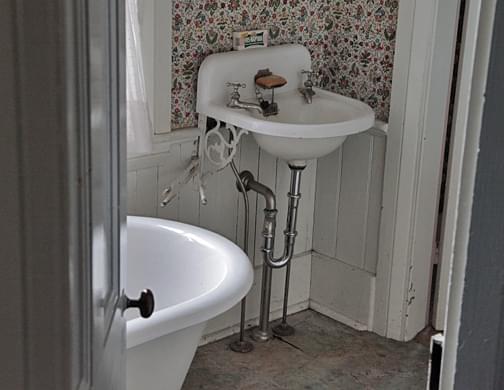
When the living neglect, or change, or otherwise renovate a place in a way that annoys the spirits, they may find ways to show their displeasure.
Eugene, who they might have hoped would move in, donated the property, along with all the family’s personal belongings. The new owners, the state park system and the Jefferson County Historical Society, brought the house up to modern standards, with such costly items as electricity, heat, phones, and plumbing on the first floor.
Personal and cherished possessions on display for public view, can draw into this world entities who once owned them, to check up on their mementos and treasures.
Emelie kept the family possessions in such detail that The Rothschild House Museum is a true step back into time, showing in great detail how life was lived n the late 19th century. Emelie or any other family member may like to come and visit their stuff.
MANIFESTATIONS
No one knows who may still be in the family home. If they are there, possible candidates may be D.C.H. Rothschild, Dorette, and Emilie. Any of the other family members may also come and visit, as is the case in many other house museums listed on hauntedhouses.com.
Disapproval?
Staff and perhaps visitors have heard the slamming of doors in empty areas of the house. Slamming doors is a sign of spiritual anger, frustration or annoyance, as it is among the living.
One or more spirits may have been annoyed at first, when the museum opened.
Emilie or Dorette may well have shown their disapproval of all the strangers traipsing through the house, which may disrupt the aura of quiet respectability that they so desired. They may want or appreciate a quiet atmosphere to dwell on their memories.
They may have thought that the last survivor of the family should be living in the house, in the traditional way. Eugene gave it all away for free, as a house museum, including all their stuff.
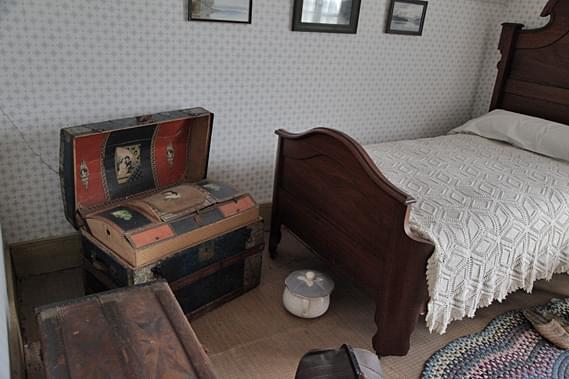
Still the Homeowners!
Perhaps one or more spirits are just trying to let the staff know that they are still in their house.
It can be frustrating not being able to communicate with the living, who can’t hear spirit voices and may ignore other simple attempts to communicate.
The staff has experienced odd and wild temperature changes, with no reasonable explanation.
These changes could be signs of the spirits trying to manifest, creating cold or hot spots to let the living know of their presence. It would be the polite, and friendly, thing to do. The Rothschilds were known for their hospitality.
Polite and Watchful
Sensitive people have felt a watchful, unseen presence on the second floor.
Some attuned, spirit-sensitive people get a tingly dizzy feeling, or experience the hair standing up on the arms, etc., when a spirit is near.
Perhaps the spirit or spirits feel it would be rude not to let such sensitive people know that they are standing nearby.
STILL HAUNTED?
Perhaps So. Not enough has been reported to say for sure, though the possibility definitely exists.
The Jefferson County Historical Society hasn’t felt the need to have a paranormal investigation done in The Rothschild House. If they have scheduled an investigation, it was on a private client basis, and if anything has been detected, it wasn’t shared. The focus of the museum should be on The Rothschild House Museum, and the life of the family that lived once there.
If the society knows that they do have spirits, they know it is a member or members of the Rothschild family. Letting in investigators may annoy their spirits, upsetting the applecart.
The spirit or spirits they may have in the house is/are very benign. Though they may get a little annoyed at times, they may also feel hospitable and friendly with visitors and staff, as they were well loved by their community. People’s personalities stay with them when they pass over and become spirits.
Part of being hospitable for the Rothschild family spirit or spirits may be to basically stay out of the way when the living are showing their house and possessions to history enthusiasts, with a few exceptions, i.e. when they let their presence be known to staff and perhaps sensitive people.
LOCATION
The Rothschild House
418 Taylor Street
Port Townsend, Washington 98368
The Rothschild House sits at the top of the Taylor Street stairs, between downtown and uptown, at the corner of Taylor & Franklin Streets.
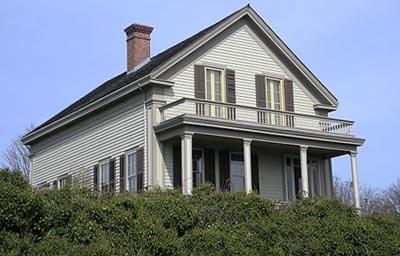
SOURCES INCLUDE
- Rothschild House website
- Rothschild House on MapQuest
- Ghost Hunter’s Guide to Seattle and Puget Sound
by Jeff Dwyer - Recollections and Opinion from an 84-Year-Old Resident
by Tom Camfield
Our Haunted Paranormal Stories are Written by Julie Carr
Our Photos are copyrighted by Tom Carr
Visit the memorable… Milwaukee Haunted Hotel
